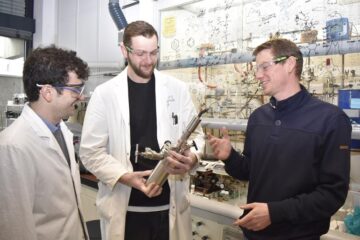Heart attack calculator

Physicians could use their system to provide patients with a personal risk factor and so advise on lifestyle changes or medication to lower their risk.
It is well known that lifestyle factors including depression, education, smoking, diet, and obesity, play a part in the risk of cardiovascular disease. However, epidemiologists who study how health risks vary through populations have not found a way to extrapolate from such broad studies to individual risk levels.
Now, Hara Kostakis of the TEI Piraeus Research Centre, in Methonis, Greece, and colleagues have investigated patterns of cardiovascular risk factors in a large population. They obtained data for almost 1000 patients enrolled in the CARDIO 2000 study who had been hospitalised with the first symptoms of ACS, acute coronary syndrome. They recorded details of body mass index, family history, physical activity, high blood pressure, high cholesterol, and diabetes were recorded. They then matched the data against healthy individuals as a scientific control.
Rather then using conventional methods for analysing statistics, the researchers borrowed an approach from the computer science field of artificial intelligence, OLAP. Online analytical processing was developed in the early 1990s and was exploited primarily in industrial and commercial applications, for financial and marketing analysis.
Fundamentally, OLAP provides a multidimensional view of data that allows patterns to be discerned in even the largest datasets that remain invisible even to the most expert user of spreadsheets. In a standard model, sales, purchases, pricing, customer base, and other economic measurements are used, Kostakis' colleagues at the University of Patras have adapted this system instead to accommodate the risk factors of heart disease.
The team points out that the CARDIO2000 study explored the association between several demographic, nutritional, psychological, lifestyle and medical risk factors, but did not necessarily provide epidemiologists and physicians with a way to visualise the results and so provide patients with a personal risk factor based on their particular circumstances.
Kostakis and his colleagues add that their approach works much more quickly than conventional statistical analysis, reveals hidden risk factors and associations and makes none of the assumptions of standard approaches to assessing risk of heart attack.
“Due to the ease of use of the methodology, a physician has the advantage of easily identifying high-risk patients by simply entering their personal data in the model,” the researchers conclude. They can then advise their patient on lifestyle and psychological. They can also prescribe more appropriate medication depending on the specific risk factors.
Media Contact
More Information:
http://www.inderscience.comAll latest news from the category: Health and Medicine
This subject area encompasses research and studies in the field of human medicine.
Among the wide-ranging list of topics covered here are anesthesiology, anatomy, surgery, human genetics, hygiene and environmental medicine, internal medicine, neurology, pharmacology, physiology, urology and dental medicine.
Newest articles

Efficient, sustainable and cost-effective hybrid energy storage system for modern power grids
EU project HyFlow: Over three years of research, the consortium of the EU project HyFlow has successfully developed a highly efficient, sustainable, and cost-effective hybrid energy storage system (HESS) that…

Safer alternative for an explosive reaction
The chemical industry has been using a reaction with explosive chemicals for over 100 years – now Mülheim scientists have discovered a safer alternative. The Ritter Group of the Max…

How immune cells communicate to fight viruses
Chemokines are signalling proteins that orchestrate the interaction of immune cells against pathogens and tumours. To understand this complex network, various techniques have been developed to identify chemokine-producing cells. However,…





















